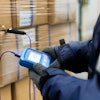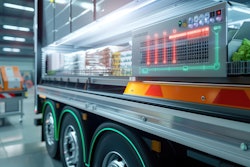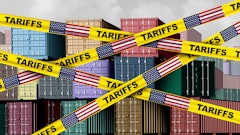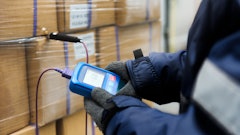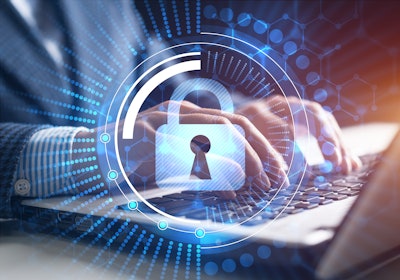
In June, over 2.2 million people found their personal data, including names, addresses, and social security numbers to be stolen in a ransomware attack. But this wasn’t a bank or a tech company. It was one of largest food retailers in the United States.
While the breach sparked headlines due to its massive employee data exposure, the operational impact was just as serious. Pharmacy systems froze, online grocery portals crashed, and some stores briefly operated on a cash-only basis. The grocery retailer shut down key internal systems for days to contain the damage, causing delays in product restocking and distribution across the Eastern Seaboard. And they’re not alone.
A crippled supply chain
Just weeks before this breach, another large grocery wholesaler in North America fell victim to ransomware. The attack forced the distributor to shut down internal systems, delaying thousands of shipments across more than 30,000 customer locations nationwide.
In 2023, a produce supplier also reported a cybersecurity incident that temporarily shut down food processing plants in North America. Shipments were paused, customers experienced delays, and the company eventually confirmed that ransomware was to blame.
These are not one-offs. They are signals of a troubling trend: cybercriminals have discovered that food and grocery supply chains are soft targets with high stakes.
Why food retail? High stakes, low defenses
Grocery supply chains depend on tightly coupled systems: just-in-time inventory, real-time refrigeration monitoring, automated warehouse management, and e-commerce platforms. These are designed for efficiency, not security.
Compounding the issue, the grocery sector traditionally operates on razor-thin margins. Security spending often takes a backseat to cost optimization. This makes food companies especially attractive to ransomware groups who know that even a day of disruption can cost millions in spoilage, sales, and brand trust. And the goal isn’t always just money. Disrupting food distribution can send economic shockwaves that go far beyond a single company’s ledger. These attackers aren’t just stealing data; they’re seizing control of critical infrastructure.
AI-powered threats: A faster, smarter enemy
Modern ransomware gangs use automation and artificial intelligence to find and exploit vulnerabilities at unprecedented speed. According to the SonicWall 2024 Cyber Threat Report, the average time from vulnerability discovery to exploitation has shrunk from weeks to under 48 hours.
One such group claimed responsibility for the grocery retail attack. They reportedly stole over 6 terabytes of sensitive internal data. Their leak site showcased employee records, including health data, bank information, and government-issued IDs, making this both a data breach and an operational threat
The same group has targeted other critical infrastructure operators since mid-2023. Their tactics are consistent: penetrate fast, steal data, encrypt systems, and demand payment, while disrupting operations to maximize leverage.
The ripple effect of an attack
After the grocery retail breach, stores across multiple brands experienced real-world consequences. Some locations couldn’t process debit or gift cards. Pharmacies struggled to access prescription data. Online grocery orders halted altogether for several days.
Customers were confused and angry. Some assumed it was a glitch. Others feared their personal data had been compromised. While the grocery retailer worked quickly to restore services, the impact on brand trust and operational reliability had already been done. This mirrored the 2023 incident, where ransomware led to shipment halts and stockouts across grocery stores that need fresh produce. And in both cases, downstream partners such as independent retailers and pharmacies were also affected, despite not being directly attacked.
Turning to MSSPs: A survival move
Faced with rising threats and internal gaps, many food and grocery companies are now turning to managed security service providers (MSSPs). These partners offer 24/7 threat monitoring, automated patching, and compliance support; services most mid-sized grocery firms can’t afford to manage alone.
Gartner reports that over 60% of mid-sized retailers now use MSSPs for critical cybersecurity functions. MSSPs also help businesses qualify for cyber insurance, a lifeline when facing multi-million-dollar breach costs. However, premiums are rising sharply, especially for high-risk sectors like food and agriculture.
A wake-up call for the grocery sector
Grocery is no longer a “low-tech” industry. It’s a digitally connected, nationally critical sector, and it’s under attack. Yet awareness remains alarmingly low. A 2024 CyberCX survey found that more than 60% of grocery executives couldn’t name the date of their last cybersecurity audit. Fewer than one in four conduct simulated breach drills annually.
This gap in readiness is dangerous. When hackers can halt warehouse operations with a single email, grocery CEOs can no longer afford to treat cybersecurity as someone else’s job.
Recommendations for grocery chains
To protect both operations and data, grocery businesses should adopt a layered cybersecurity strategy:
· Run a cyber risk assessment across all operational systems.
· Segment your networks, isolating high-value assets like inventory systems.
· Deploy real-time monitoring and backups with tested restoration plans.
· Train every employee to detect phishing and social engineering.
· Vet your suppliers’ cybersecurity posture, especially in logistics and IT.
· Work with MSSPs to extend expertise and improve response speed.
· Establish a cyber incident response plan that includes supply chain contingencies.
The bottom line
The next breach is already underway somewhere. Whether it cripples a small regional distributor or a national grocery brand depends on how well the industry is prepared. What’s become clear in 2025 is this: cybersecurity is no longer optional in the grocery business.
It’s as essential as refrigeration, inventory systems, and delivery trucks. If you can’t defend your data and systems, you can’t serve your customers. And when shelves go empty or prescriptions can’t be filled, people notice.
Cyber threats are evolving. The food industry must evolve faster.




